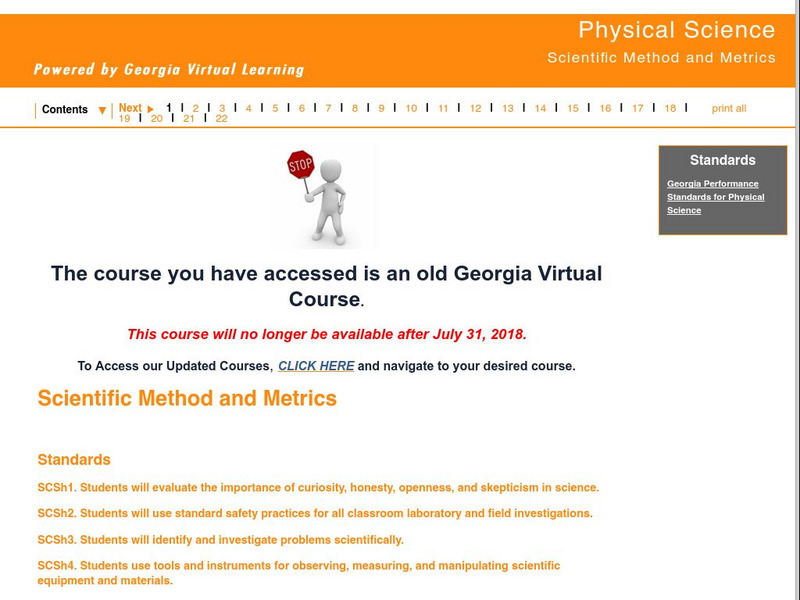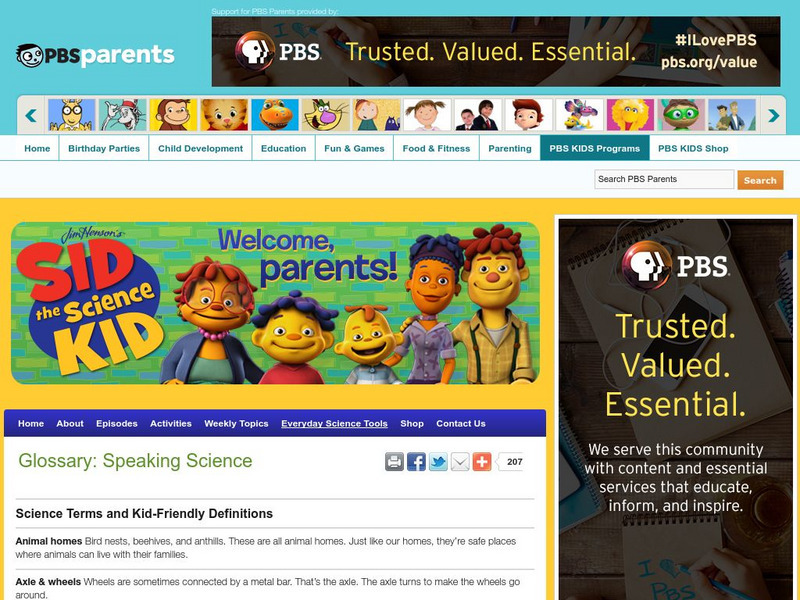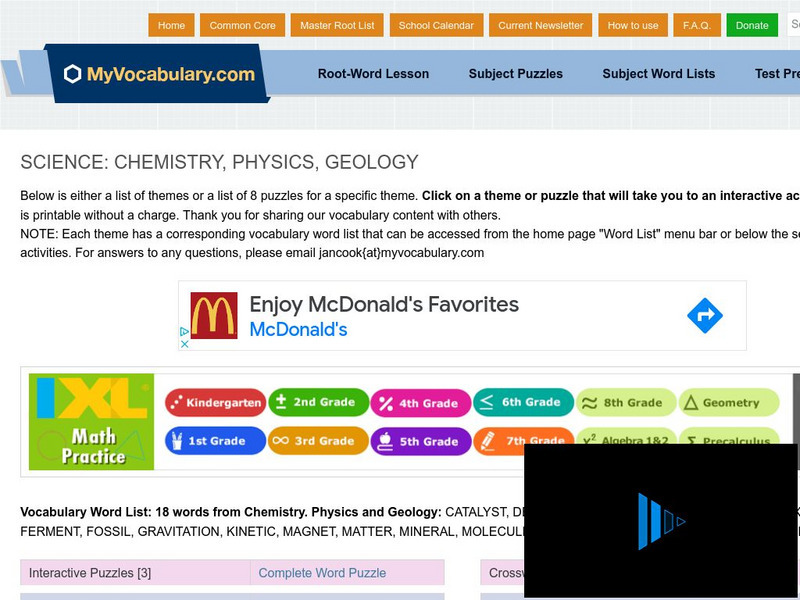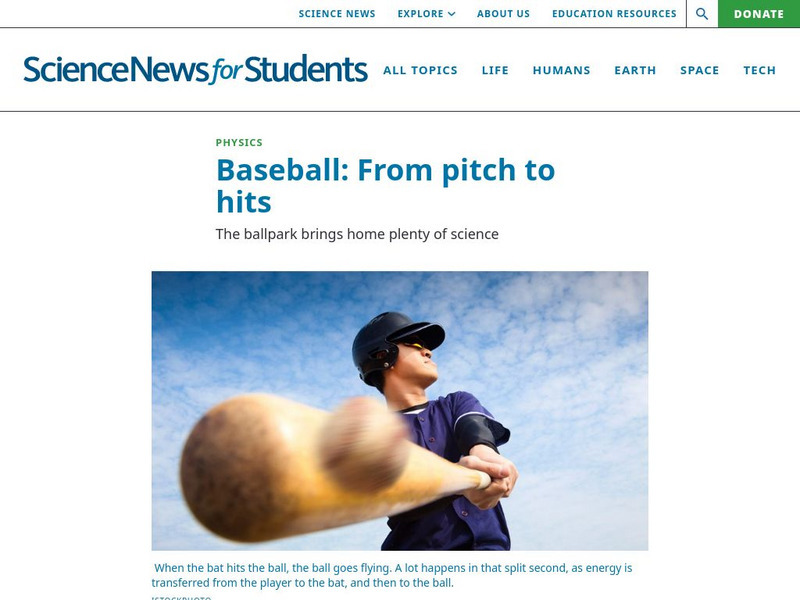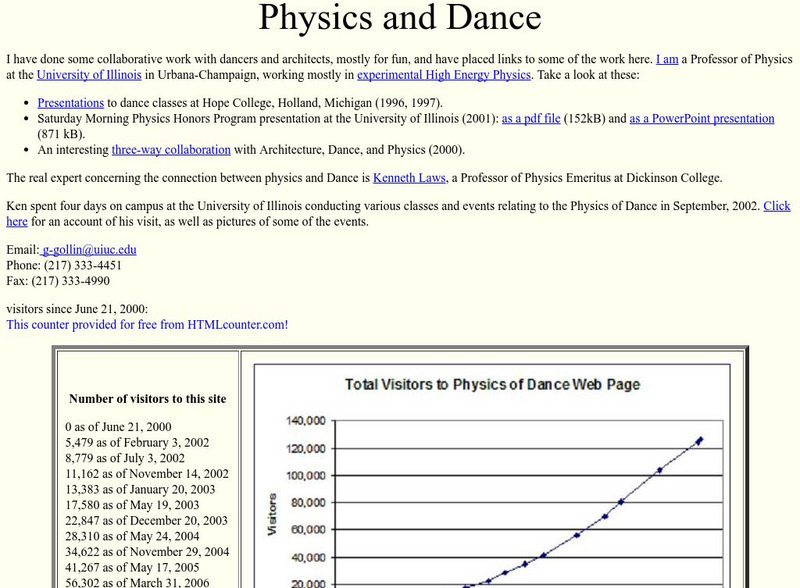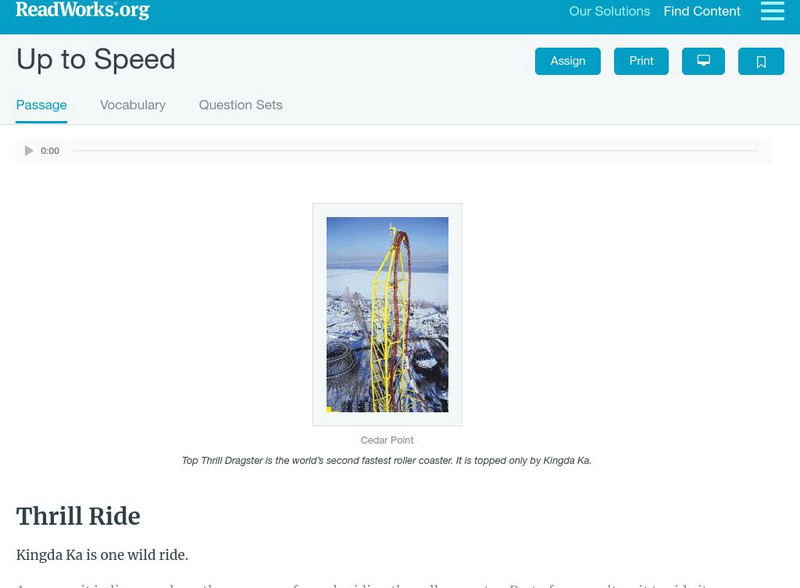Hi, what do you want to do?
Curated OER
Machinery In Society
Students explore technology by completing a worksheet in class. In this common machinery lesson, students define the different designs that make simple machines work such as wheels, pulleys and gears. Students utilize verbs to describe...
Curated OER
Focusing on Lenses
Students explore scientific observations by examining the parts of a microscope. In this optics lesson, students discuss the importance of a focal point and focal distance when utilizing an optical device such as a microscope. Students...
Curated OER
Desert Postcards
Students research characteristics of deserts. They present their findings in small groups to the class. Students utilize information learned about desert biomes, geography of the route of the Niger, and expeditions in their writing.
Curated OER
Geographic Landscapes and Interstate Freeway Development
Learners investigate the topography of the United States through a discovery lesson. They create a hypothetical route for a highway across the United States. Students also conduct research major landforms and define geographic terms.
Curated OER
Locating the Salt Front
Students use Hudson River salinity data to create a line
graph that shows the location of the salt front, and use math
skills to explore how this location varies over time. They use the graph to estimate the location of the salt front...
Curated OER
Lesson 1: The Image of Maine in Sinclair Lewis' Babbitt
Students study excerpts from Sinclair Lewis, "Babbitt" for its accuracy and socio-economic point of view. They rewrite a portion of "Babbit" using the point of view of a Maine guide.
Curated OER
I Need Money...I Need a Job
Students discover how to use a phone book and the want ads to find a job, how to fill out a job application, and how to write/type a resume. They participate in a mock job interview.
Curated OER
Dive and Discover the Ocean
Third graders investigate the three zones of the ocean and the plants and animals that live in each zone. Projects produced are shared with classmates in a share circle where the unique features of the animal and zone selected are...
Curated OER
Couch Potato or Inertia Victim?
Sixth graders how primary research is carried out. They design a simple survey questionnaire to interview people about their week average television watching time. They analyze the results and write a report based on the information.
Curated OER
The Barnum and Bailey Bartered Bride
Students focus on the study of The Bartered Bride by integrating the theme of the circus begin the lesson with a "KWL" strategy map on the Circus. Students are asked: What do you know about the circus?
Curated OER
What does AG have to do with me?
Students practice alphabetizing while categorizing sources of basic agricultural products. They discuss agricultrual products, discover where they are grown and draw a simple agricultural scene on poster board.
Georgia Department of Education
Ga Virtual Learning: Physical Science: Scientific Method and Metrics
Students have the opportunity to review the scientific method, become familiar with vocabulary terms associated with scientific investigation, and learn about real-world scientific examples where the method is used.
Wisc-Online
Wisc Online: Physics Waves Vocabulary
Shoot for the moon in this vocabulary game over physics waves.
Discovery Education
Discovery Education: Physical Science: Gravity Gets You Down
In this lesson, young scholars make predictions about falling objects of different sizes and masses to learn about gravity and air resistance. Includes audio vocabulary list and extension activities.
PBS
Pbs Kids: Sid the Science Kid: Glossary: Speaking Science
A glossary of science terms, including terms for life, earth, and physical science.
Vocabulary University
My vocabulary.com: Science: Chemistry, Physics, Geology
This page has a variety of vocabulary puzzles and activities using 18 words pertaining to Science: Chemistry, Physics, Geology. It also provides an extensive list of science words.
Math Science Nucleus
I. Science Ma Te: Integrating Science, Math and Technology
This site offers a wealth of online textbook-related materials that encourage the discovery of science in the world around us. Enter the site to access material on specific topics. Each section contains reading material (complete with...
Society for Science and the Public
Science News for Students: Baseball: From Pitch to Hits
This article explains some of the science behind baseball. Also includes a list of vocabulary words from the article.
University of Illinois
University of Illinois Urbana Champaign: The Physics of Dance
A scholarly examination of the physics of dance, this reads like the notes of a lecture, so requires some intense reading. It presents a glossary of physics vocabulary, particularly as terms (e.g., torque, static balance) relate to dance...
Discovery Education
Discovery Education: Lesson Plans Library K 5
This resource presents a lesson plan library which holds hundreds of lesson plans organized by grade level and subject area. Often rooted with an Internet research piece, each lesson plan contains specific objectives, procedures,...
Utah Education Network
Uen: I'm So Bright! I Wear My Shades Indoors!
This instructional activity engages students in learning about light through multiple sources. Students will learn how light is produced, reflected, refracted, and separated. Students will communicate their findings through an...
English Club
English Club: Vocabulary: Cloze Games: Science 8
Choose from a word bank to complete ten sentences about the various branches of physics. Hints are available if needed, and a percentage score is displayed once answers are submitted.
Read Works
Read Works: Up to Speed
[Free Registration/Login Required] An informational text about the science behind roller coasters, including Kingda Ka, one of the tallest and fastest roller coasters in the world. A question sheet is available to help students build...
Read Works
Read Works: Famous Scientists Sir Isaac Newton
[Free Registration/Login Required] This passage is a short biography of Sir Isaac Newton and his discovery of the force of gravity. This passage is a stand-alone curricular piece that reinforces essential reading skills and strategies...
















